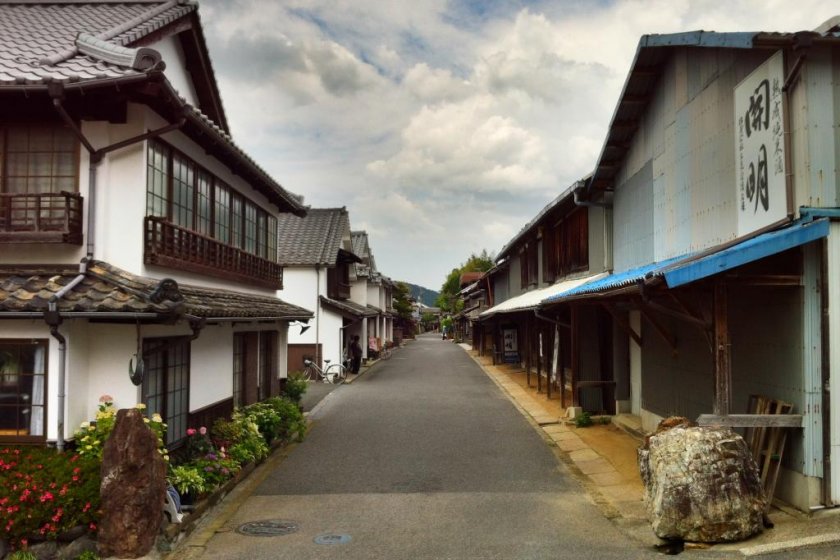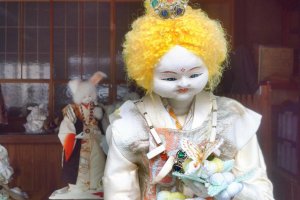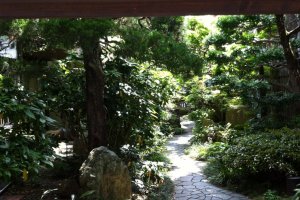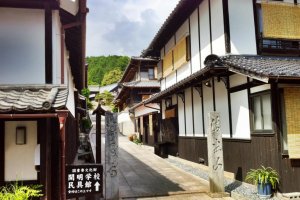The municipality known as ‘Seiyo City’ is little more than a bureaucratic fiction. In reality it’s a diverse mountain and coastal region with the little town of Uwa as its main urban center. The heart of Uwa is an area called Unomachi. This is a single street of old buildings dating from the Edo Period and later. Besides its original name Unomachi, this area also goes by the rather fatuous appellation Bunka no Sato, the Home of Culture. The street has been designated as an Important Traditional Construction Preservation Area, and it shows. While the surrounding ‘unimportant’ streets are looking the worse for wear, Unomachi is positively blooming.
When I last visited, I approached Uwa from the path leading down from the Ehime Museum of History and Culture. This places you at the eastern end of Unomachi, in front of the Uwa Philosopher’s Museum, one of four charming museums in this area. With parochial pride, this museum celebrates some of the wise and talented individuals raised in Uwa, presenting their achievements and some of their personal effects on the first floor. The second floor is a gallery of paintings and ceramics.
Next door is the Ikeda-ya Restaurant, housed in what was once a sake brewery. Here I enjoyed a satisfying lunch prepared with quality local ingredients under the massive dark beams that support the roof. I also sampled some of the sake offered for tastings in the little shop near the entrance.
After lunch, I strolled west down Unomachi, being greeted by young children on bikes and a group of elderly ladies manning a row of shops. They displayed some sharp commercial instincts, praising my Japanese, calling me handsome, and suggesting I purchase some jako tempura, a local delicacy. Making my escape, I poked my head into the Bunka no Mori Kyukeijo. This is a restored building which functions as a shop and rest area. Visitors are automatically offered a cup of green tea and invited to have a seat before a large and impressive brazier. This service is free of charge.
My next stop was the Suemitsu-ke Jutaku, a very large house dating from 1770, which belonged to merchants who sold soy sauce and sake. I was lucky to visit on the first Saturday of the month when this building is open to the public from 2:00 to 5:00. I was given a thorough tour by the kind gentleman who oversaw the preservation of the building. He also took me to the Matsuya ryokan, where the hotelier gave me a tour of the historic accommodations which have hosted famous personages including Prime Ministers of Japan. You can also have lunch here.
A short distance down the street are the Kaimei School, Kokyo-ji Temple and the excellent Museum of Folk Tools, all arranged conveniently close to each other.
My last stop was the Rice Museum, part of an the old elementary school that was relocated when the new school was built. It’s a very long wooden building, stretching for 109 meters. It was built in 1928. It houses some very interesting exhibits about the cultivation and marketing of rice, with many real tools and machines from various periods in history. There’s also a schoolroom preserved as it was, and in a separate building, a scale model of the old primary school, showing it to be an impressively large building suitable for a time when Japan’s population was much larger.
Unomachi is a wonderfully atmospheric place, and the people of Seiyo are friendly and welcoming. I’m impressed every time I go there.



































